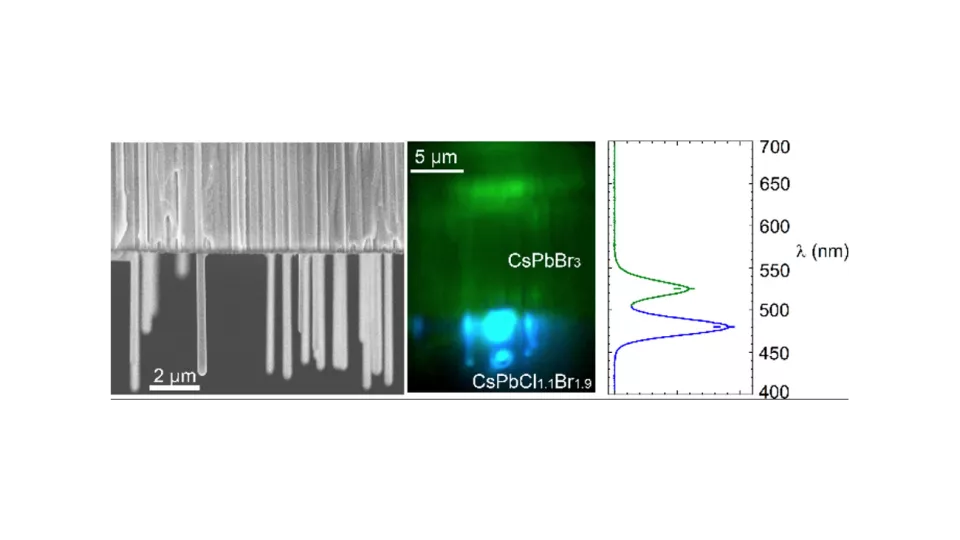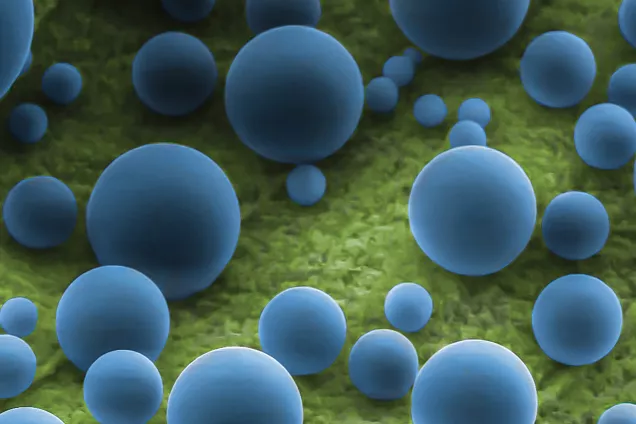“In these times with the crisis of traditional fossil energy, developing new kinds of clean energy is becoming more and more important. Metal halide perovskites could in the future be used for low-cost and high-efficiency solar cells and light-emitting diodes. Using MHP nanowires could make such devices better,” says Zhaojun Zhang, a post-doctoral fellow at the Department of Physics, and a researcher at NanoLund.
Metal halide perovskites (MHPs) are a new class of materials with excellent optical properties, that are being developed for solar cells, light-emitting diodes, and X-ray detectors. These materials are normally grown as polycrystalline thin films. In the recently published study, Zhaojun Zhang together with Jesper Wallentin, an Associate Professor of Synchrotron Radiation Research and a Principal Investigator at NanoLund, show a way to grow one such material, CsPbBr3, in the form of free-standing nanowires.
Not previously possible
“The structures are about 200 to 350 nanometers in diameter, and we can control the length up to 20 μm. The nanowires are single-crystalline and show strong green photoluminescence. We also show that we can modify the nanowires after crystal growth, such that part of the nanowires emit in blue,” says Zhaojun Zhang.
Growing vertically aligned and free-standing MHP nanowires was not previously possible. Furthermore, the researchers use a quite simple and low-cost method that could be extended to other MHP materials. Present methods to obtain free-standing vertically aligned MHP nanowire arrays and heterostructures lack the scalability needed for applications. The researchers use a low-temperature solution process to prepare free-standing vertically aligned green-emitting CsPbBr3 nanowires from anodized aluminum oxide templates.
Metal halide perovskites could in the future be used for low-cost and high-efficiency solar cells and light-emitting diodes.
“The most important thing we have learned from this study is, first, that MHP nanowires can be grown from solution. It was initially unexpected that free-standing nanowires would do that, but we now have a good understanding of the growth mechanism. Second, we can change the composition and the color of part of the nanowires after growth, using a gas containing chlorine. This creates nanowires with two colors in different parts,” says Zhaojun Zhang.
“Nanowires have quite different optical properties from thin films, with highly directional emission and absorption of light. We think this opens up a lot of new possibilities for MHP devices based on nanowires. For instance, the nanowire shape could be used to direct the emission from light-emitting diodes.”



